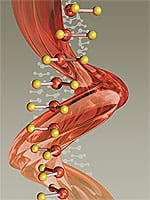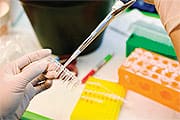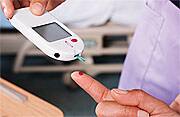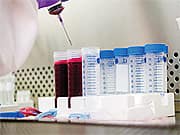Life Extension Magazine®
Academic Deceit in Gerontology Exposed | |
A groundbreaking paper has just been published in the May/June 2009 issue of the Archives of Gerontology and Geriatrics.* It is the first time that a peer-reviewed scientific journal has exposed the covert misdeeds and extreme abuse of academic and political power by the gerontological establishment. For the past 14 years, the gerontological establishment has sought to persecute anti-aging physicians, anti-aging health practitioners, and the American Academy of Anti-Aging Medicine (A4M; www.worldhealth.net), simply because they defy the prevailing model of disease-based, drug-oriented medicine. This Archives of Gerontology and Geriatrics article exposes scientifically shocking insights into the calculated and deliberate repression of innovative thought and freedom of choice in health care internationally. The abstract of this important paper is online. To locate “Is consensus in anti-aging medical intervention an elusive expectation or a realistic goal?” go to www.sciencedirect.com and enter “Zs-Nagy” in the author field to search for the abstract. Here is an excerpt from Prof. Imre Zs-Nagy, MD’s landmark paper:
Prof. Imre Zs-Nagy, MD, a part of the gerontology movement for four decades, and founder and editor-in-chief of the Archives of Gerontology and Geriatrics, has courageously stepped up to speak the truth. At great professional risk, he has come forth to blow the whistle on 14 years of censorship and repression of the science of anti-aging medicine, and advanced preventive medicine, by the gerontological establishment. In asking “Is consensus in anti-aging medical intervention an elusive expectation or a realistic goal?,” Prof. Zs-Nagy, MD, concludes that, “There has been little else as dramatic, important, beneficial, and significant as the anti-aging medical movement… anti-aging medicine has flourished in its sixteen-year long history, garnering the support of more than 100,000 physicians and scientists worldwide who practice or research life enhancing, life extending interventions.” Ronald Klatz, MD, DO, president of the American Academy of Anti-Aging Medicine, observes that, “A decade-long campaign waged by the gerontological elite has severely restricted the freedoms of physicians to administer life enhancing, and potentially life saving therapies. The effect of this calculated campaign has held back the advancement of clinical anti-aging and natural hormone replacement therapy research, leading to unnecessary morbidity, and, likely – mortality, for millions of people worldwide. In my opinion, this is a heinous crime against humanity. The A4M remains committed to defending the independent physician and we applaud Prof. Imre Zs-Nagy, MD for his courage and fearless commitment to intellectual and academic honesty.” —Vernon Howard, PhD | |
| Reference | |
| * Arch Gerontol Geriatr. 2009 May-Jun:48(3):271-5. | |
Higher Vitamin D Levels Associated With Better Prostate Cancer Prognosis | |
| In an article published recently in the British Journal of Cancer, investigators concluded that men with medium-to-high serum levels of vitamin D have a better chance of surviving prostate cancer compared with men with the lowest levels of the so-called “sunshine vitamin.”* For an average of slightly less than four years, Norwegian scientists followed the progress of 160 men who had been diagnosed with prostate cancer. At the end of the study period, statistical analysis revealed a significant association between higher serum levels of 25-hydroxyvitamin D and better cancer outcomes. The relative risk of dying from prostate cancer was slashed by two-thirds among men with medium levels of 25-hydroxyvitamin D (20-32 ng/mL), versus those with the lowest levels (<20 ng/mL). The risk was slashed by more than 80% among patients with the highest levels of 25-hydroxyvitamin D (>32 ng/mL). This protective association was even greater among men who received hormone therapy. If confirmed by further research, the findings suggest that identifying and correcting low serum levels of serum 25-hydroxyvitamin D could be an important strategy in prostate cancer management. —Dale Kiefer | |
| Reference | |
| * Br J Cancer. 2009 Feb 10;100(3):450-4. | |
Early Soy Consumption Linked With Reduced Breast Cancer Risk | |
| An article published in Cancer Epidemiology, Biomar-kers and Prevention reports that Asian-American women who consume high amounts of soy during childhood have a lesser risk of developing breast cancer than women who consume less soy.* Larissa Korde, MD, MPH, of the National Cancer Institute and her colleagues analyzed data from 597 breast cancer patients and 966 healthy women of Asian descent who resided in the US. For participants whose reported childhood intake of soy was among the highest one-third of subjects, there was a 58% lower risk of breast cancer compared with those whose intake was in the lowest third. “Since the effects of childhood soy intake could not be explained by measures other than Asian lifestyle during childhood or adult life, early soy intake might itself be protective,” stated Dr. Korde. “Animal models suggest that ingestion of soy may result in earlier maturation of breast tissue and increased resistance to carcinogens.” —Dayna Dye | |
| Reference | |
| * Cancer Epidemiol Biomarkers Prev. 2009 Apr;18(4):1050-9. | |
Zinc Helps Ward Off Diabetes in Women | |
High zinc intake is associated with a reduced risk of type 2 diabetes in women, according to an analysis of data from the long-term Nurses’ Health Study.* A total of 82,297 women provided information on zinc and other food intake, as well as new diagnoses of type 2 diabetes, every two years since 1980. Effects of zinc were analyzed by comparing the highest with the lowest levels of intake, which were 18.0 versus 4.9 mg/day for total zinc and 11.6 versus 5.0 mg/day for dietary zinc. After 24 years of follow-up, 6,030 women developed type 2 diabetes. Participants with the highest level of either total zinc intake or dietary zinc intake had about an 18% lower risk of diabetes after accounting for non-dietary risk factors. The decrease in risk remained about 9% after accounting for non-dietary and dietary variables. Although the recommended dietary allowance for zinc is 8 mg/day in women and 11 mg/day in men, these findings suggest that higher levels of intake may be beneficial. In addition to its role in diabetes prevention, zinc is crucial for immune and eye health. —Laura J. Ninger, ELS | |
| Reference | |
| * Diabetes Care. 2009 Jan 26. | |
Longer Telomeres Associated With Multivitamin Use | |
| A study conducted by researchers at the National Institutes of Health has provided the first epidemiologic evidence that the use of multivitamins by women is associated with longer telomeres, the protective caps at the ends of chromosomes that shorten with the aging of a cell. The study was reported in the American Journal of Clinical Nutrition.* Honglei Chen and colleagues evaluated 586 participants aged 35 to 74 in the Sister Study, an ongoing prospective cohort of healthy sisters of breast cancer patients. The researchers found 5.1% longer telomeres on average in daily users of multivitamins compared with non-users. “Our study provides preliminary evidence linking multivitamin use to longer leukocyte [white blood cell] telomeres,” the authors concluded. “This finding should be further evaluated in future epidemiologic studies and its implications concerning aging and the etiology of chronic diseases should be carefully evaluated.” —Dayna Dye | |
| Reference | |
| * Am J Clin Nutr. 2009 Mar 11 | |
Alpha-Lipoic Acid Reduces Triglycerides in Model of Obesity/Diabetes | |
An article published in the Archives of Biochemistry and Biophysics reports the benefits of the antioxidant compound alpha-lipoic acid in lowering triglycerides.* High triglyceride levels often occur in obesity, and are a predictor of atherosclerosis, non-alcoholic fatty liver disease, and even premature mortality. For the current research, Regis Moreau and colleagues at Oregon State University’s Linus Pauling Institute used rats bred to become obese and diabetic. Beginning at five weeks of age, the animals were given 200 mg R-alpha-lipoic acid per kilogram of body weight each day for five weeks. While triglyceride levels doubled among those that received alpha-lipoic acid, they increased by over 400% in the control group. “The potential is good that this could become another way to lower blood triglycerides and help reduce the risk of atherosclerosis,” Dr. Moreau remarked. “It’s pretty exciting.” —Dayna Dye | |
| Reference | |
| * Arch Biochem Biophys. 2009 Feb 20 | |
DHA Reduces Tumor Growth | |
| In an article published in Cell Division, Egyptian researchers report that the omega-3 fatty acid docosahexaenoic acid (DHA) not only offers its own protection against tumor growth, but improves the chemotherapeutic effects of cisplatin while reducing its toxicity.* Professor A. M. El-Mowafy of Mansoura University and associates administered 125 mg/kg of DHA, 250 mg/kg of DHA, cisplatin alone, cisplatin combined with DHA, or a control substance to groups of mice implanted with mammary carcinoma cells. “DHA elicited prominent chemopreventive effects on its own, and appreciably augmented those of cisplatin as well,” Prof. El-Mowafy observed. In another experiment with rats treated with cisplatin, the addition of 250 mg/kg DHA prevented lethal kidney toxicity in 88% of the animals that received it, while none of the rats that received cisplatin alone survived. “This study is the first to reveal that DHA can obliterate lethal cisplatin-induced nephrotoxicity and renal tissue injury,” Prof. El-Mowafy remarked. —Dayna Dye | |
| Reference | |
| * Cell Div. 2009 Apr 2;4(1):6. | |








